What is New Historicism?

PhD, English Literature (Lancaster University)
Date Published: 10.05.2023 ,
Last Updated: 01.02.2024
Share this article

Definition and origin
Can we ever truly separate the art from the artist? Can we appreciate or interpret a work of art without examining the context in which it was produced? For new historicists, the simple answer is “no”. New historicism is a literary theory that argues that literature should be understood and interpreted within its historical and cultural context; this involves examining both the context of production and the context of reception.
In his work The Power of Forms in the English Renaissance (1982), Stephen Greenblatt coined the term “new historicism” to describe this way of examining literature, basing his theory, partly, on the work of Michel Foucault. New historicism differs from historicism by looking at the specific contexts influencing a work of literature or art. For example, a historicist may look solely at larger historical events or entire periods; conversely, a new historicist would look at the specifics of the author’s background and experiences, as well as that of the critic. New historicism sees literature as not merely being impacted by history, but as something that can influence and be influenced by history, seeing their relationship as being reciprocal. History, as viewed by new historicism, is not objective as it is discursively produced. History should, therefore, be used to help us understand how historical viewpoints are complex and filtered through our own experiences. New historicists, therefore, recognize their own subjectivities and biases and feel obligated to disclose their own political and philosophical views. This disclosure is known as self-positioning.
In The New Historicism (2013), Harold Aram Veeser explains that,
A newcomer to New Historicism might feel reassured that, for all its heterogeneity, key assumptions continually reappear and bind together the avowed practitioners and even some of their critics [...]
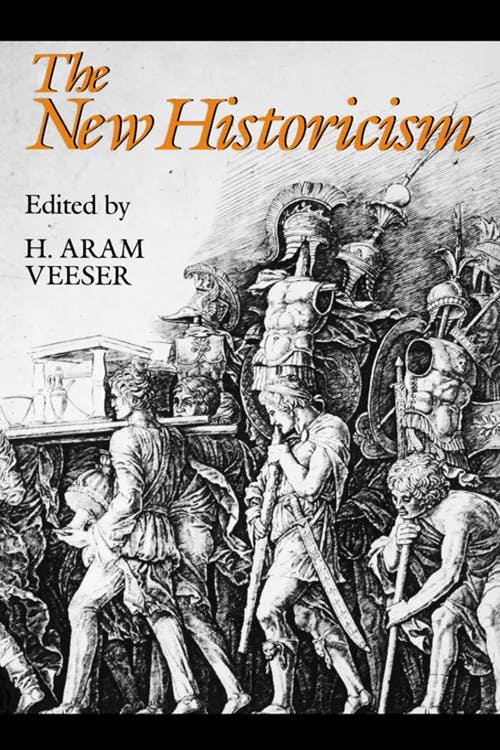
Harold Aram Veeser
The key assumptions he identifies are,
1. “Every expressive act is embedded in a network of material practices”
When authors express themselves, they are either consciously or unconsciously influenced by their own culture, material circumstances and environment. We can, therefore, see the author’s ideologies, political views, and perspective seep into their work.
2. “Every act of unmasking, critique, and opposition uses the tools it condemns and risks falling prey to the practice it exposes”
Critics also bring their own experiences, biases, and perspectives into their interpretations of a text.
3. “Literary and non-literary ‘texts’ circulate inseparably”
No texts should be separated based on their perceived literary value. New historicism, therefore, aims to combat literary elitism. It is important to acknowledge both “high” and “low” forms of literature to fully understand a period. For example, a lot of canonical literature was inspired by popular, “trash” fiction; Bram Stoker’s Dracula (1897, [2012]) was influenced in part by the penny dreadful Varney the Vampyre (1845-46, [2012]) by James Malcolm Rymer.
4. “No discourse, imaginative or archival, gives access to unchanging truths nor expresses inalterable human nature”
There is no such thing as a universal truth and, as such, there are no literary works which can expose deeper truths.
5. “A critical method and a language adequate to describe culture under capitalism participate in the economy they describe”
Though new historicists often criticize capitalism, they are participating in and upholding the capitalist economy by publishing academic books and working at wealthy universities. If a critic publishes a work on capitalism and exploitation, they contribute to the publishing company; the academic may work at a university and the fees paid by the students contribute to the salaries of those at the university in executive positions.
Stephen Greenblatt and self-fashioning
In The Power of Forms in the English Renaissance (1982), Greenblatt discusses literature in relation to “self-fashioning” in the Renaissance period. Self-fashioning is used to explain how individuals create their identity in line with societal norms and cultural expectations. For example, nobles would dress in a way which denoted their station and fashioned themselves to reflect the identity they wanted to convey, and what was expected for someone of that class.
Literature, he suggests, functions in a similar way and has three layers:
- A work reflects the attitudes, values, and ideas of its author.
- A work of literature reflects control mechanisms and social codes which shape our behavior.
- A work of literature reflects upon and comments on those mechanisms and codes.
Literature, therefore, is emblematic of the time in which it is produced, the culture’s expectations and the education and beliefs of the writer. Works of literature are informed heavily by the language of the author which can be influenced by a number of factors.
Greenblatt explains that,
Language, like other sign systems, is a collective construction; our interpretive task must be to grasp more sensitively the consequences of this fact by investigating both the social presence to the world of the literary text and the social presence of the world in the literary text. ( Renaissance Self-Fashioning , 2012)
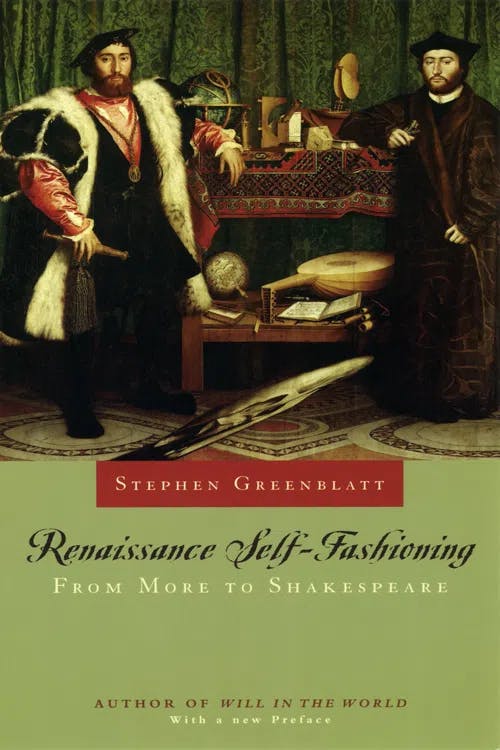
Stephen Greenblatt
In other words, our language is shaped by everyone we have come into contact with, in addition to what we learn, read, or experience. For example, we may use slang taught to us by friends, or learn vocabulary from something we read or watch. Our language continually develops and, as such, is constructed. For literary critics, the language of a writer will be impacted by the various artworks they are exposed to, their social circle, the slang of the period, and what was culturally acceptable to talk about.
New historicism’s influences
Greenblatt’s work is indebted to Marxism, particularly the writings of Louis Althusser and Frederic Jameson. Jameson, for example, believes texts should be understood through the social and economic circumstances at the time of production; Jameson’s statement “always historize” epitomized new historicist thought ( The Political Unconscious , 1981, [2013]). Greenblatt also refers to the Althusserian discussion of ideology, concluding that a text’s interpretation is impacted by the ideology of the reader and the author.
One of the major influences on new historicism is philosopher Michel Foucault. Foucault suggests that history can never be objective as concepts of truth and knowledge are shaped by hegemony and then legitimized by the dominant culture. In The Archeology of Knowledge (1969, [2013]), Foucault challenges the traditional method of studying history and the progress of civilizations. He explains that historians have focused primarily on “long periods” and “shifts and changes of political events”, often negating aspects of historical interest such as the “history of corn” or “the history of drought and irrigation” (2013). For Foucault, it is important we study history in a holistic way in order to “reveal several pasts, several forms of connexion, several hierarchies of importance, several networks of determination, several teleologies” (2013).
It is not just what we choose to study which can impact our understanding of history and the contexts in which we read literature, but the time in which we study history. Foucault argues that
historical descriptions are necessarily ordered by the present state of knowledge, they increase with every transformation and never cease, in turn, to break with themselves. (2013)
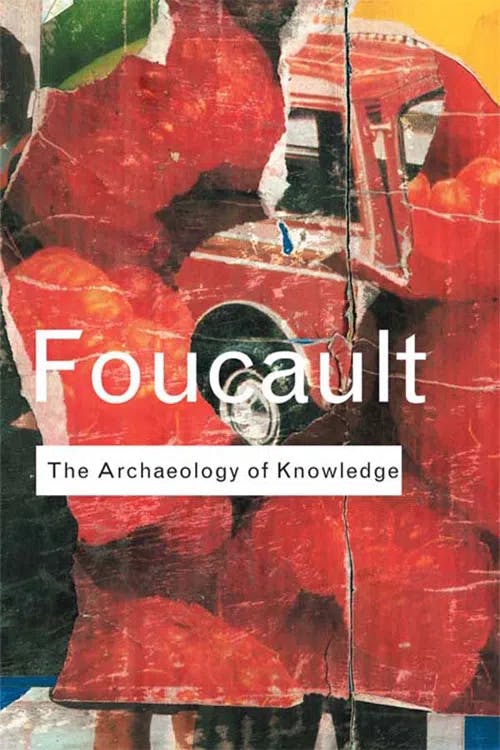
Michel Foucault
Our understanding of history is contingent on a wide range of factors such as our environment, ideologies, and social and political norms. When the historian writes a description of a historic event, their writing will be influenced by current norms and existing knowledge. As such, perceptions of history can change over time. The same is true of how we understand literature or works of art from different time periods. For example, a critic writing on William Shakespeare’s The Merchant of Venice (1596–8) in the twenty-first century, may identify, and take issue with, the anti-Semitism present in the text. Our modern interpretation of Shakespeare’s work, therefore, is influenced by our own accepted norms and ideologies. As Foucault argues that knowledge and understanding (including stereotypes and norms) are shaped by the dominant ideology, we can see discourse and narratives surrounding Jewish people changing over time in accordance with the development of ethics, and an awareness of the ramifications of prejudice. (See our study guide for more information on Foucault and power relations .)
Brook Thomas explains that Greenblatt’s “attraction” to Foucault comes from his “distrust of marxism’s totalized worldview” ( The New Historicism and Other Old-Fashioned Topics , 2021). Foucault’s work, on the contrary,
makes room for the marginalized, the bizarre, the excluded. The argument that all acts of representation produce exclusions may seem pessimistic, but the very structure of repression guarantees the existence of a marginal that resists absorption into a culture’s master narratives. (2021)
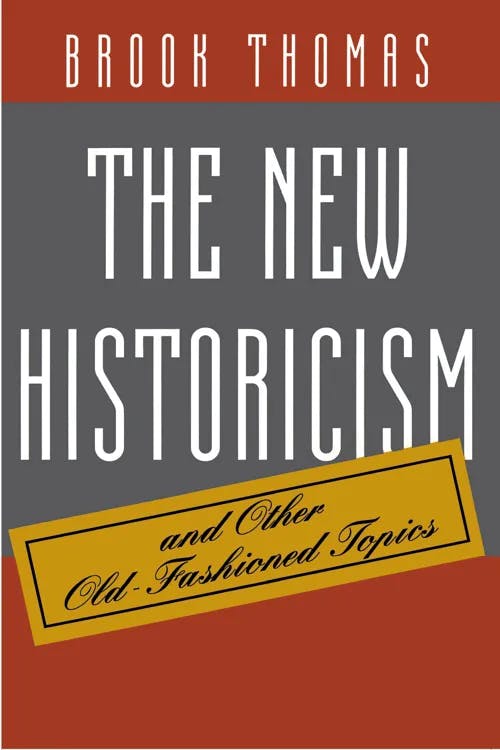
Brook Thomas
New historicism also acknowledges these marginalized groups and recognizes that grand narratives in history have resulted in the silencing of these groups. In other words, if dominant powers can control the norms and education within a culture, they are able to dictate how history is recorded, understood, and made known, leaving the stories of these groups untold. This, according to new historicism, has also resulted in a simplified view of history and a generalization of entire events, places, and eras. By taking into account a wider range of perspectives, new historicism argues we can understand a work of literature in all its complexity and nuance.
Practicing new historicism
In "Professing the Renaissance: The Poetics and Politics of Culture", Louis A. Montrose demonstrates how new historicism raises various issues for those working in Literary Studies and related fields. In recent years, he suggests, English Literature has become more open to those whose identity (in terms of race, gender, class origins etc.) “complicates their actual or imaginative participation in the cultural and ideological tradition enshrined in the works which they study and teach” (cited in The New Historicism , 2013). Montrose goes on to state that this diversification of the field can result in two possible effects: it may provoke either a “compensatory embrace of the dominant culture” or “contestatory attitudes, and provide vantage points for the appropriation and critique not only of Renaissance texts but also of the interpretive norms of Renaissance studies” (2013).
In Practicing New Historicism (2020), Catherine Gallagher and Greenblatt explain the central issues at the core of new historicism: the use of anecdotes, preoccupation with representation, fascination with the body, and skepticism towards ideology.
1. Recurrent use of anecdotes
For Gallagher and Greenblatt, anecdotes provide an alternative view of established historical records, giving a new outlook on a specific event or time period. They write that,
outlandish and irregular [anecdotes] held out the best hope for preserving the radical strangeness of the past by gathering heterogeneous elements — seemingly ephemeral details, overlooked anomalies, suppressed anachronisms — into an ensemble where ground and figure, “history” and “text” continually shifted. The desired anecdotes would not, as in the old historicism, epitomize epochal truths, but would instead undermine them. The anecdotes would open history, or place it askew, so that literary texts could find new points of insertion. (2020)
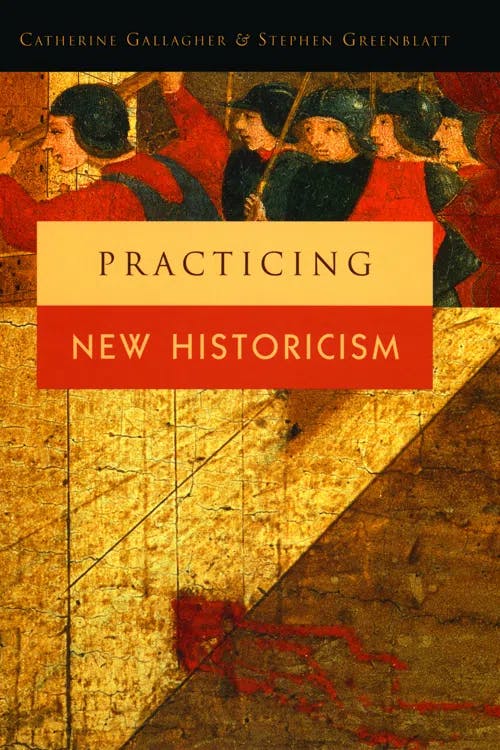
Catherine Gallagher and Stephen Greenblatt
Anecdotes, therefore, provide a contrast against history’s grand narratives and offer multiple viewpoints which undermine dogmatic or seemingly universal truths.
2. Preoccupation with representation
New historicists must take into account how subjective opinions, perspectives, or biases may color the way a historical event is presented by writers, historians, and artists. Gallagher and Greenblatt write,
Our project has never been about diminishing or belittling the power of artistic representation, even those with the most problematic entailments, but we never believe that our appreciation of this power necessitates either ignoring the cultural matrix out of which the representations emerge or uncritically endorsing the fantasies that the representations articulate. (2020)
In other words, new historicists need to engage with artistic representation to truly understand a culture, but must do so in a way which is critical and cognizant that such artistic renderings of the past are not to be equated with historical fact.
3. Fascination with the body
New historicism focuses on the history of the human body and the human subject, specifically in relation to life and death, or illness and health. Gallagher and Greenblatt use the example of the potato riots in the 1790s. They explain that economic historians have tended to view the riots as a response to hunger. Taking into account the wider social and cultural factors, such as the working classes’ perspective of potatoes as food for the poor, and as a symbol of their status, we can begin to see the potato riots as more complex than initially presumed. They write,
The moral economy was [...] not just a cultural mediator of responses to the physical stimulus of hunger; it was itself a physiological-cultural stimulus: both the experience of inclusion inside a corporate body and a cause of the sensation of hunger [...] Our point is not that the rejection of the potato caused the dearth of the 1790s; but the vehement refusal to accept potato substitutes for white bread when they were available points to a need for a thorough historicization of what counted as food and what felt like hunger. (2020)
Gallagher and Greenblatt make a strong case for a precise analysis of any historical event.
4. A skepticism of ideology critique
New historicism looks to gradually replace ideology critique with discourse analysis. Discourse analysis refers to studying written or spoken language in relation to the given social and cultural context.
As Gallagher and Greenblatt state,
traditional “close readings” tended to build toward an intensified sense of wondering admiration, linked to the celebration of genius, new historicist readings are more often skeptical, wary, demystifying, critical, and even adversarial. (2020)
The movement to discourse analysis arose due to many new historicists being “uncomfortable with such key concepts as super-structure and base or imputed class consciousness” (2020).
The problem with new historicism
In New Historicism and Cultural Materialism (2016), John Brannigan outlines several of the criticisms levied at new historicism.
- New historicism is not, in fact, new; literary critics have, for a long time, taken into account social and political contexts when studying a work of literature.
- Literature should “transcend” factors such as the “politics, sociology, place, and the biography, race, and sexual orientation of the author.”
- New historicism “[ignores] the universal themes of literature.”
- New historicism reduces “human agency” by attributing the “production of literature to historical forces.”
He goes on to add that,
One of the most problematic aspects of new historicism for historians, however, is its insistence on the pervasiveness and ineluctability of an overarching power, which pays scant attention as a result to the specificities and complexities of history. (Brannigan, 2016)
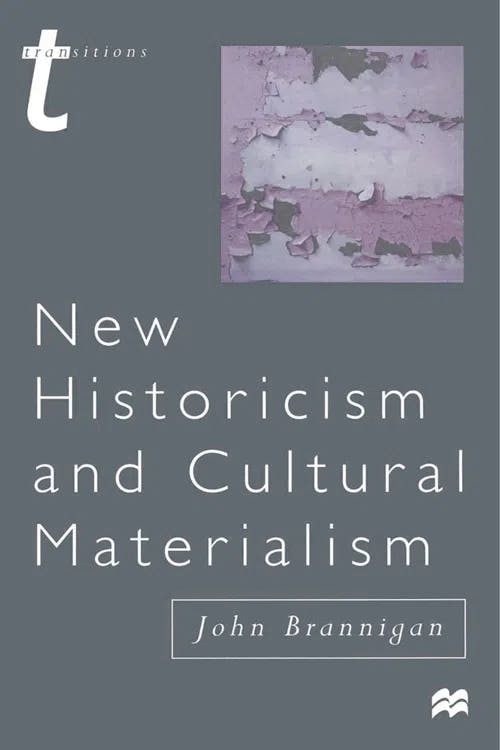
John Brannigan
By making generalized statements regarding dominant powers, new historicists often do not engage with the nuances of history (in Brannigan’s view).
In “New Criticism: A Comment”, Hayden White explains why various scholarly groups, from literary critics to historians, take issue with new historicism’s framework for understanding literature. For example, progressives, White argues, can accept some fabrication, but are concerned that the ignoring of facts can result in propagandist revisions of history. If the new historicist framework acknowledges that history has no objective truth, does this justify, for example, Holocaust denialists? As White highlights, new historicism can end up excusing “specious propaganda masquerading as scholarship” ( The New Historicism , 2013).
Other groups of scholars, for different reasons, reject new historicism. White writes,
by suggesting that literary texts can be illuminated by the study of their relations to their historical contexts, the New Historicists offend against the formalist tenets of an older but still powerful New Criticism. (2013)
(For more information, you can read our study guide on new criticism here .)
In addition to this, White argues that the separation of text and context is an affront to post-structuralism — which argues that “there is nothing ‘outside’ of texts” (2013).
Closing thoughts
New historicism’s belief that literature cannot be separated from the culture that produced it has provided valuable insights into Early Modern texts and beyond. When discussing the continued relevance of new historicism, Mark Robson writes,
Whether or not people call themselves new historicists [...] the influence of Greenblatt’s work seems too firmly embedded in literary studies as it is currently constituted for claims that new historicism is dead or finished with to be treated with too much seriousness. ( Stephen Greenblatt , 2014)
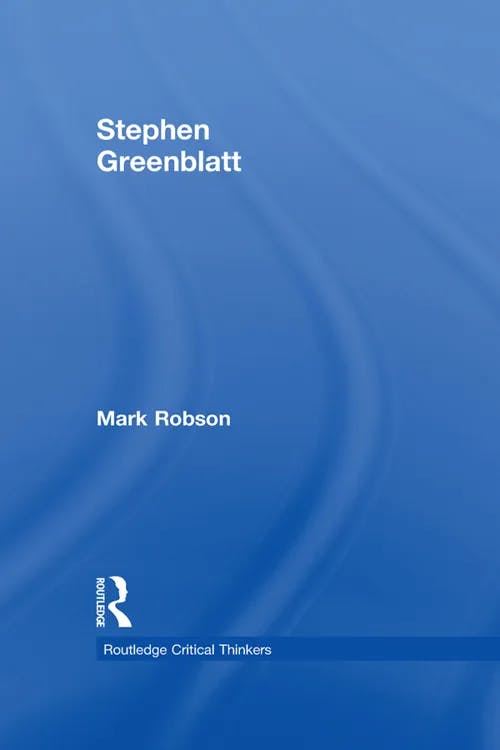
Mark Robson
Just as history influences literature, literature can influence history. As literary works can help to establish, or resist, dominant ideology, they contribute to shaping the social milieu of a culture. This reciprocal relationship between literature and history illuminates our understanding of both fields and allows us to understand a cultural, historic moment in all its minutiae.
Further reading on Perlego
Parvini, N. (2012) Shakespeare and Contemporary Theory: New Historicism and Cultural Materialism . Bloomsbury Academic. Available at: https://www.perlego.com/book/1357576/shakespeare-and-contemporary-theory-new-historicism-and-cultural-materialism-pdf
Parvini, N. (2017) Shakespeare and New Historicist Theory . Available at: https://www.perlego.com/book/808297/shakespeare-and-new-historicist-theory-pdf
Wilson, R., and Dutton, R. (2016) New Historicism and Renaissance Drama. Available at: https://www.perlego.com/book/1568441/new-historicism-and-renaissance-drama-pdf
What is new historicism in simple terms?
New historicism is a literary theory that argues that a work should be understood and interpreted within its historical context (including both the context of the author’s history, the critic’s history, and the social and political culture at the time the book was written).
What is the difference between new historicism and cultural materialism?
Cultural materialism , like new historicism, focuses on power dynamics in relation to interpreting texts. However, while new historicism analyzes texts in relation to past societies, cultural materialism looks at literary texts within the context of contemporary power relations. For example, cultural materialism may study anti-Semitism in the twentieth and twenty-first centuries in relation to the work of Victorians such as Charles Dickens. In contrast, new historicism would view the work of Dickens in relation to its own specific cultural and historical context.
Who are some key new historicist thinkers?
Stephen Greenblatt, Louis A. Montrose and Catherine Gallagher are three key new historicists.
What is an example of new historicism?
An example of new historicism in practice could be applied to William Shakespeare’s The Merchant of Venice (1596–8). A critic in the twenty-first century, may identify, and take issue with, the anti-Semitism present in the text. Our modern interpretation of Shakespeare’s work, therefore, is influenced by our own accepted norms and ideologies.
Bibliography
Brannigan, J. (2016) New Historicism and Cultural Materialism. Bloomsbury Academic. Available at: https://www.perlego.com/book/2997848/new-historicism-and-cultural-materialism-pdf
Gallagher, C. and Greenblatt, S. (eds.) (2020) Practicing New Historicism. University of Chicago Press. Available at: https://www.perlego.com/book/1852579/practicing-new-historicism-pdf
Greenblatt, S. (2012) Renaissance Self-Fashioning: From More to Shakespeare . University of Chicago Press. Available at: https://www.perlego.com/book/1851877/renaissance-selffashioning-from-more-to-shakespeare-pdf
Foucault, M. (1969, [2013]) The Archeology of Knowledge . Routledge. Available at: https://www.perlego.com/book/1612530/archaeology-of-knowledge-pdf
Jameson, F. (1981, [2013]) The Political Unconscious: Narrative as a Socially Symbolic Act . Cornell University Press. Available at: https://www.perlego.com/book/534073/the-political-unconscious-narrative-as-a-socially-symbolic-act-pdf
Morris, W. (2015) Toward a New Historicism . Princeton University Press. Available at: https://www.perlego.com/book/738423/toward-a-new-historicism-pdf
Robson, M. (2014) Stephen Greenblatt . Routledge. Available at: https://www.perlego.com/book/1619758/stephen-greenblatt-pdf
Rymer, J. M. (1845-46 [2012]) Varney the Vampyre . The Floating Press. Available at: https://www.perlego.com/book/1303457/varney-the-vampire-the-feast-of-blood-pdf
Stoker, B. (1897, [2012]) Dracula . William Collins. Available at: https://www.perlego.com/book/670643/dracula-pdf
Thomas, B. (2021) The New Historicism and Other Old-Fashioned Topics . Princeton University Press. Available at: https://www.perlego.com/book/2574868/the-new-historicism-and-other-oldfashioned-topics-pdf
Wilson, R. and R. Dutton (eds.)(2016) New Historicism and Renaissance Drama . Routledge. Available at: https://www.perlego.com/book/1568441/new-historicism-and-renaissance-drama-pdf
Veeser, H. A. (2013) The New Historicism . Routledge. Available at: https://www.perlego.com/book/1547183/the-new-historicism-pdf
Sophie Raine has a PhD from Lancaster University. Her work focuses on penny dreadfuls and urban spaces. Her previous publications have been featured in VPFA (2019; 2022) and the Palgrave Handbook for Steam Age Gothic (2021) and her co-edited collection Penny Dreadfuls and the Gothic was released in 2023 with University of Wales Press.

Popular articles
What is critical race theory (crt), what is judith butler’s theory of gender performativity, how to write & format a college admissions essay, what is phenomenology, what is marxism, what is the anthropocene, waves of feminism - first to fourth wave timeline, what is utilitarianism in ethics, how to write a thesis statement, what is ai ethics, what is commodity fetishism, what is afrofuturism, what is plato's allegory of the cave.
We use cookies to give you the best experience possible. By continuing we’ll assume you’re on board with our cookie policy

- A Research Guide
- Literary Movements
What is New Historicism
New historicism theory – an explanation, what is new historicism.
- Each act that is expressed is as a result of a network of material practices.
- Every act of uncovering, analyzing and opposition actually uses ways that it condemns and hence may conform to that which it exposes.
- Literary and non-literary texts circulate inseparably.
- There is no social boundary whether imagined or archived that gives access to universally unalterable truths nor portrays the unchangeable nature of human.
- An analytical or rather critical means and a language good enough to describe culture under capitalism participate in the economy is described.
How new historicism came to be
Historical criticism.
- The time that the text was written.
- The person who wrote the literature.
- The events that happened at the time the literaturewas being written.
- How the literature has evolved with time to the form in which it is present today.
- What message did it carry to the very first audience of the literature and what did it mean to the readers.
- Source citation- as the name suggests, this methodology particularly aims at identifying the original source of the text. It can be attributed to Richard Simon, a French priest in the 17th century. This methodology questions if the text resulted from a single source, author or historical context and aims at uncovering sources within any literary work. A common instance is in the Gospel books (Mathew, Mark and Luke) which share the similar texts and hence a historical critic will analyze these Biblical texts to identify the actual source of the text.
- Form criticism- this methodology breaks down the Bible or literature work into sections, that is, periscopes or stories which are further analyzed and subdivided into genres which include: plays, lamentations, epistles, gospels, prophecy, laws, hymns, prose or verses. Essentially it aims to decipher what the text is meant to portray by analyzing the linguistic patterns used to bring out the text.
- Redaction criticism- in this case, the critic focuses on analyzing how the writer brought together the various traditions and culture into one whole comprehensible text. It may also be done by analyzing the collection, arrangement, modification and alteration of the original source into the form that the text is in hence the name redaction. It is mostly used to reestablish the community and intention of the writer of the text.
- Tradition criticism- this is an aspect of form criticism where the critics focus on finding the means through which the periscopes became part of the larger texts and most importantly how the oral were changed to writing. This methodology is however considered obsolete due to questionable stability, detectability and priority of oral traditions.
Who is a Historicist
- Their keen interest in recovering lost histories, which is a characteristic shared by new historicist and cultural materialists.
- Unlike cultural materialists, new historicists tend to shift their attention to the high class or rather those individuals up the social hierarchy.
- Have a key interest in governance, culture, past and present events among other institutions.
- Hold the perception that each and every cultural event is key in making history and should be considered for historical analysis.
- View literatureas more than just a work of art or rather an artefact as do the new criticists and also do not hold the view of liberal humanists who believe that literature has timeless significance and universally valuable.
- New historicists goal is to simultaneously comprehend literature through its historical and cultural context while analyzing the cultural and intellectual history portrayed by the literature.
- Have an interest in questions of economy which include; circulation, negotiation, profit and exchange and how some of the activities, in and including literary work, which appears to be above the market are in fact driven and wholly influenced by the forces of demand and supply (determinants of market value).
By clicking "Log In", you agree to our terms of service and privacy policy . We'll occasionally send you account related and promo emails.
Sign Up for your FREE account

Want to create or adapt books like this? Learn more about how Pressbooks supports open publishing practices.
27 Student Example Essay: New Historicism
The following student essay example of New Historicism is taken from Beginnings and Endings: A Critical Edition . This is the publication created by students in English 211. This essay discusses Lorrie Moore’s short story, “Terrific Mother.”
When Women Were Never Enough: A New Historical Perspective on Lorrie Moore’s “Terrific Mother”
by Tania Agurto
Motherhood has been a source of discord in recent decades for being a concept that is exclusively associated with women, and it turns out to be for some people or societies a kind of meter that helps to pigeonhole women or rank them depending on whether they have decided or managed to be mothers. Lorrie Moore’s “Terrific Mother” presents us this reality through Adrienne, a woman in her mid-thirties, single, childless, which due to her personal circumstances receives compliments such as, “You would make a terrific mother” (Moore 3). Adrienne attends a gathering of friends and by accident, her friend’s baby she holds falls along with her when the picnic bench toppled on her, and sadly the baby dies, which leads her to make decisions such as seclusion for months and later marriage, as an escape route from her pain and guilt. This is how Adrianne, despite being a woman who breaks with the socially established canons, cannot get out of the vicious circle established for women in those years.
Through the lens of New Historical Criticism, we can appreciate the external influences that shape Moore’s work and at the same time understand the reality experienced by women in the late 1990s. At the end of the nineties the world was already seeing a change concerning the established social model; this could be appreciated in the delay in the age of marriage and childbirth due to prioritizing the pursuit of a professional career, the joining of women to the workforce or simply seeking independence without the need for marriage. These changes were reflected in the increase in the average age of women at the time of marriage, which had risen from 20 – 22 years in the early nineties to 25 years at the end of 1997 (Yarrow). This is how the author manages to bring to the fore the important social events that were happening worldwide through Adrienne, a single and independent woman. Regarding that, Karen Weekes declares that “protagonists in Moore’s short stories cycles are constantly exploring and pushing against the social boundaries that they and others have established” (3).
A characteristic of the social change of the nineties is the recognition and the requirement of women as a multifaceted beings; however, in Text and Contexts Steven Lynn acknowledges that having equal opportunities is good, but it is not fair when the woman is responsible for taking those opportunities while taking care of everything else (223). Weekes also refers to this and points out that “females’ identities are continually formed and reformed, allowing women to fluctuate between stages of development in response to the sociological demands of relationships and maternal nurturing.” However, we can see to this day that, even though things have become the same through the years, the demand has always been greater for women or the reward for the opportunity has been uneven.
Although we know that the historical context will shape the result whatever the work, the author’s background will also do it. Steven Lynn points out “We can hardly understand one person’s life without some sense of the time and place in which he or she lived, and we can hardly understand human history without trying to think about the individual humans who made it” (148). As part of Moore’s life story, she comments that as a child she was very thin and that made her feel fearful of her environment; she even shared that she was afraid to walk over the grates. Once she became an adult that was not an exception since Moore, like Adrianne, broke with the established pattern, but she continued with his fearful personality. Don Lee comments that “her expectations for herself were modest. Entering St. Lawrence, she hadn’t been exactly bursting with ambition.” Later Moore adds, “ I think I probably went to college to fall in love” (“About Lorrie Moore”). The influence of her environment and pre-established social patterns have likely helped her to feel that way concerning her personal abilities and expectations. How did this fearful girl become the successful writer of “Terrific Mother”? It is probably her personality that has helped in a great way since this influences her way of writing which is detailed as follows: “Many of her stories are fairly traditional in structure, but there is always that quickness of movement, that slightly skewed narrative perspective that keeps you alert and a little uneasy —she could pull something anytime, and you don’t want to miss it” (Unlikely Stories). Moore herself catalogs her life as “conventional” and that is what makes her strangely close in her way of writing.
However, despite not feeling too trained or not being completely sure of the path she wanted to follow professionally, she broke all standards and has even been highlighted as one of the best authors of American short stories. In an article that talks about the rebirth of American short stories Vince Passaro declares, “When volumes like those from Lorrie Moore …a new kind of work stepped out onto the American literary landscape, more psychologically rich and confrontational than that of the minimalists” (“Unlikely Stones”).
The time period in which the story was written tells us a lot about important social changes concerning the visualization of women as defiant beings of the unilaterally established rules. In the late 1990s, it was the Post Feminist movement that was gaining momentum; however, it seems that Adrienne remains to live only First Wave Feminism, since it only leaves the parameter of breaking the scheme, but does not advance further.
The foregoing is explained in her decision to marry Martin, who offers her the option to accompany him to his academic retreat in northern Italy, then in this way “she could be a spouse” (Moore 4). The emotional situation that Adrienne experiences does not allow her to see further and she thinks that this decision will allow her to resume her life; to try to live again because she “is a bushwoman now” (Moore 4). As a consequence of this decision, Adrienne becomes emotionally subjugated to Martin, which makes her dependent on him emotionally and does not help her with her previous mental-emotional situation.
“Terrific Mother” is a complex story in which Lorrie Moore takes us along surprising paths and we can see how the historical context influences the development of this work; however, it should be mentioned that Moore’s background also affects the setting of the stage in this story. Just as she admits to leading a very conventional life, she also leads Adrienne to try to follow the same path, because “Marriage it’s an institution”, which means that at this time in a historical-social environment, surpassed currents of equality, equity, and liberation.
Works Cited
Critical Worlds Copyright © 2024 by Liza Long is licensed under a Creative Commons Attribution-NonCommercial 4.0 International License , except where otherwise noted.
Share This Book

IMAGES
COMMENTS
Example of a New Historicism thesis statement: In one of his earlier poems, “Lament for Dark Peoples,” African American poet Langston Hughes makes a powerful argument against the “circus of [white] civilization (line 12), demonstrating how the cultural norms toward marginalized peoples in place during the early twentieth century damaged ...
light of the new historicism theory. 1.2 Statement of the Problem The major problem the present study deals with is that Arthur Miller was notably influenced by historical and cultural aspects in his life which inspired him to write his most successful play Death of a Salesman. New historicism is a literary school concerned
May 10, 2023 · New historicism is a literary theory that argues that a work should be understood and interpreted within its historical context (including both the context of the author’s history, the critic’s history, and the social and political culture at the time the book was written).
New Historicism seems to have started in the early 1980s and furnished literary critics with a new perspective to interpret the works of literature when a number of essays were promulgated by Stephen Greenblatt, Jonathan Dollimore, and Lois Montrose. New Historicism appeared with the influence of various thinkers like
What is New Historicism New historicism theory – an explanation. As described, the new historicism theory evaluates literature through a comprehensive analysis of the social and cultural events that surround the event being described and so much more how these socio-cultural events help to build the event.
New Historicism is a literary theory based on the idea that literature should be studied and intrepreted within the context ... How do I write a good thesis statement?
New Historicism: An Intensive Analysis and Appraisal Rajani Sharma New Historicism, the most innovative critical movement, came in existence in 1980 because of the critical manifesto of Stephen Greenblatt, “an award winning literary critic, theorist and scholar” who coined this very term New Historicism for the first time
27 Student Example Essay: New Historicism The following student essay example of New Historicism is taken from Beginnings and Endings: A Critical Edition. This is the publication created by students in English 211. This essay discusses Lorrie Moore’s short story, “Terrific Mother.”
2. Determine (or conjecture) which aspects of the author’s cultural/historical context might be informing the above. 3. Reflect on how/which aspects of your own cultural/historical context might be informing your interpretation of #1. 4. Craft a thesis statement that sums up the cumulative effect of 1-3 (or 1+2 or 1+3) 5.
New Historicism, a form of literary theory which aims to understand intellectual history through literature and literature through its cultural ... Cookie statement;